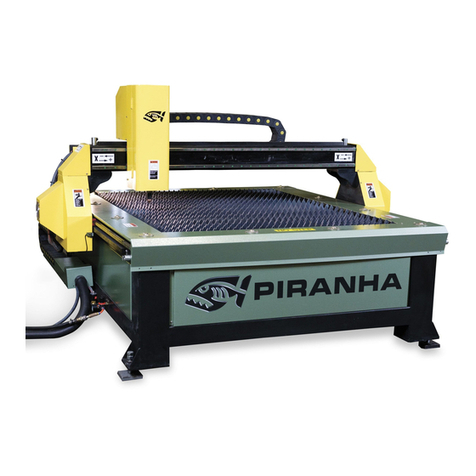OPERATOR
This equipment has been designed with operator safety in mind (when used under
normal operating conditions). The user must always be alert to the possibility of
dangerous situations. Always exercise care and caution. Report any minor
problems immediately, so that they can be corrected before becoming major
difficulties. Only qualified personnel should make repairs on the machine.
1. Be familiar with the machine. Read and review the Piranha and vendor
component manuals carefully.
2. Be alert in regard to the significance of the various warning indicators and be
conscious of the functions of pushbuttons and other controls. Use the controls
properly. Review and understand the operation of the EMERGENCY STOP
function and the CYCLE STOP function.
3. Never operate the equipment unless it is in good working order.
4. Wear safety glasses and other personal protective equipment as required by
applicable federal, local industry and plant safety program standards.
5. Wear proper clothing. Do not wear watches, rings, jewelry or loose-fitting
clothes.
6. Avoid all moving parts of the machine or workpiece when setting up or operating
the equipment. Never reach into the machine while it is active. Use the
EMERGENCY STOP or CYCLE STOP function to stop machine motion. Never
use the machine DWELL time code for parts removal or other operator
intervention activities that puts the operator in a hazardous position.
7. Recognize and avoid unsafe operating conditions.
8. Maintain a clean work area. Avoid accidents by keeping work areas clean and
neat.
9. Never leave the machine in an unsafe condition.
10. Never leave a machine running unattended.
11. Never remove or bypass safety devices.
12. Report any unsafe conditions, personal injury or machine problems immediately
to your appropriate supervisor(s) and safety manager(s). In case of personal
injury notify Piranha Service Department giving a brief description and date
reported injury occurred.
13. Never operate the machine with someone within a hazardous area.




























